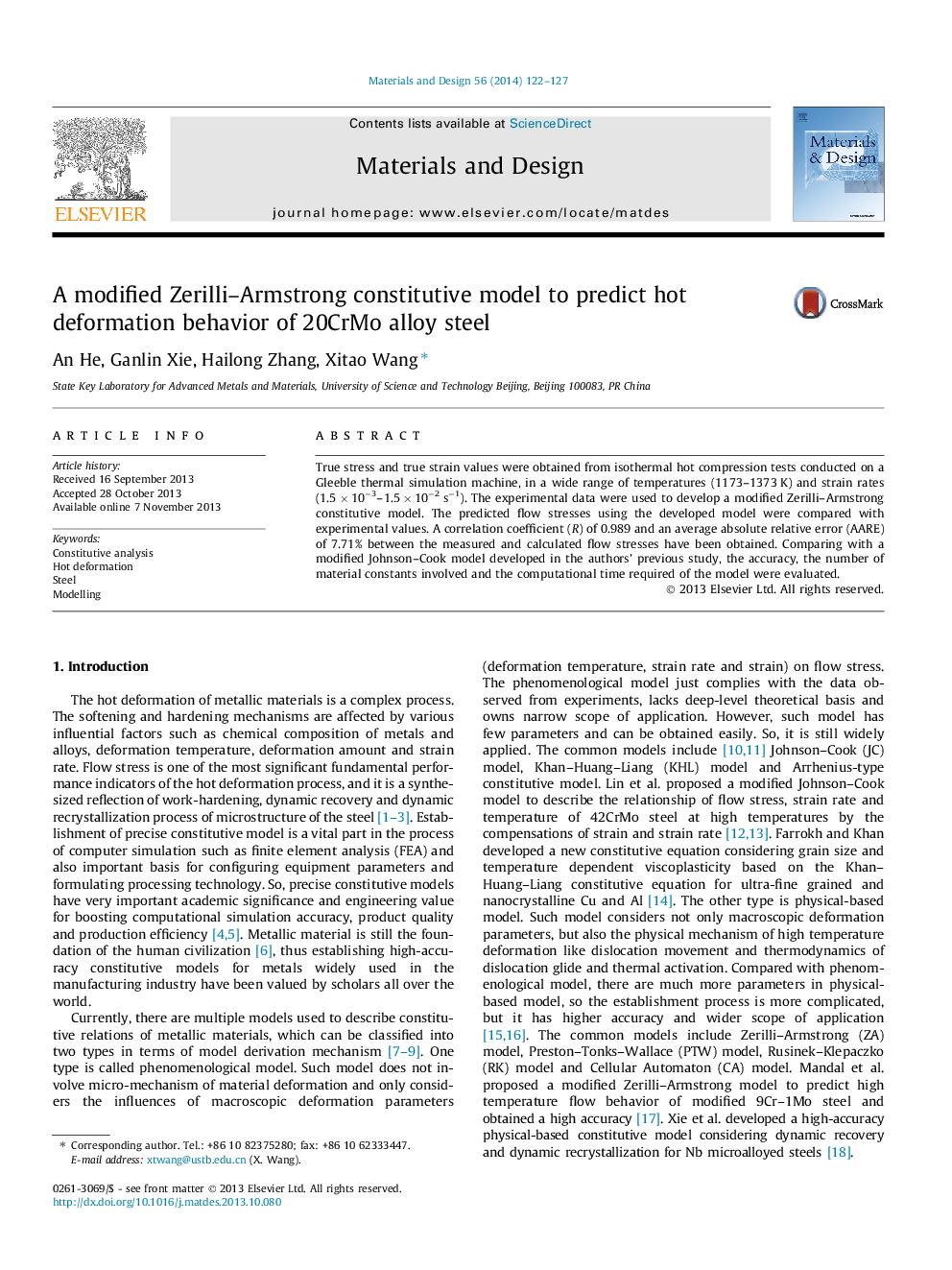| Article ID | Journal | Published Year | Pages | File Type |
|---|---|---|---|---|
| 829420 | Materials & Design (1980-2015) | 2014 | 6 Pages |
•The modified Z–A model predicts the flow stresses accurately.•Comparing with the J–C model, the computational time of Z–A increases by many folds.•The modified Z–A model has a relatively higher accuracy than the J–C model.•The modified Z–A model is more difficult to develop than the J–C model.
True stress and true strain values were obtained from isothermal hot compression tests conducted on a Gleeble thermal simulation machine, in a wide range of temperatures (1173–1373 K) and strain rates (1.5 × 10−3–1.5 × 10−2 s−1). The experimental data were used to develop a modified Zerilli–Armstrong constitutive model. The predicted flow stresses using the developed model were compared with experimental values. A correlation coefficient (R) of 0.989 and an average absolute relative error (AARE) of 7.71% between the measured and calculated flow stresses have been obtained. Comparing with a modified Johnson–Cook model developed in the authors’ previous study, the accuracy, the number of material constants involved and the computational time required of the model were evaluated.
